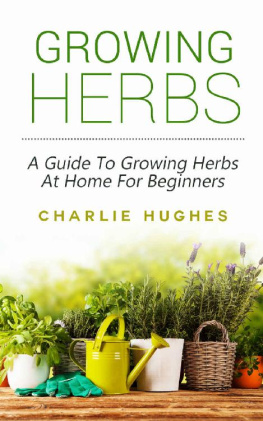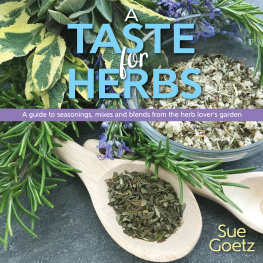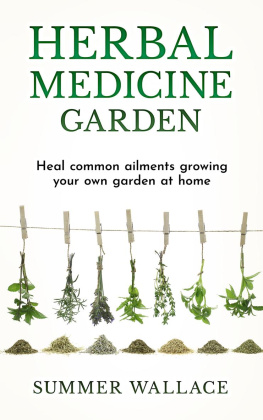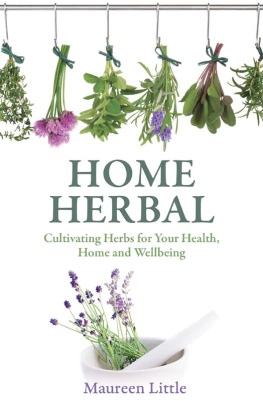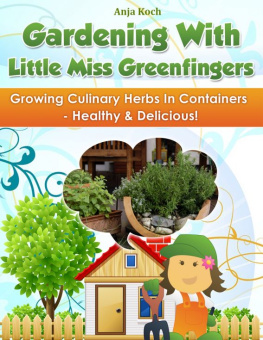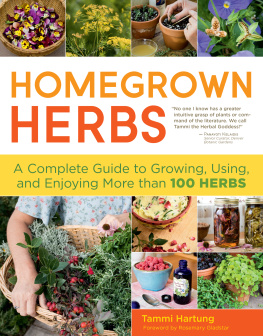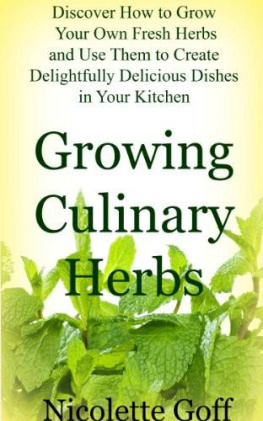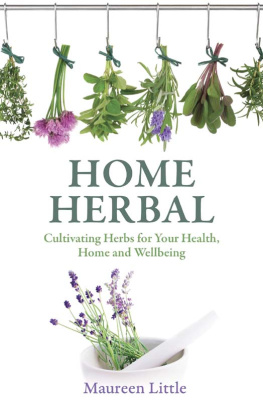15 Herbs for Tea
Marian E. Sebastiano
Introduction
Of all my herbal gardens, the tea bed is truly my favorite. The tea garden is a sensory delight, producing colors, scents, and flavors to enjoy throughout the season. Best of all, these scents and flavors can be stored away at summers end for use in the cold winter days. The wonderful tastes and aromas of the herbal teas bring back memories of summer days spent in the garden.
The tea garden is also a place of beauty, beginning with a border of blue catmint flowers in early spring, followed by white chamomile blossoms and then purple mints and red pineapple sage. Hummingbirds and butterflies frequent the tea garden to enjoy the sweet nectars, adding to the delight!
Finally, the tea garden will provide the herbal ingredients for wonderful homegrown gifts for the holidays, housewarmings or anytime. By drying the tea herbs and then blending them and packaging them in unique ways, you can share the bounty of your garden with appreciative friends and family.
So growing your own herbal teas can be just as therapeutic as drinking them. The plants are easy to grow. (Too easy, in the case of mints!) You dont need a large area. They can even be container grown. Best of all, you know your teas are pesticide-free and you arent paying for a lot of fancy packaging.
In this bulletin we will explore the joys of growing and using herbal teas, examine some individual plants, learn how to harvest and blend the ingredients, and then learn how to package blends. Most of all, we will learn to brew a delicious cup of tea!

What Is Tea?
If you sit down with a rabid tea-aholic, you will quickly learn that the only real tea is the traditional black or green tea made from leaves of the plant Camellia sinensis. All herbal teas are more properly called tisanes or infusions. But as the popularity of herbal teas skyrockets, the word tea has come to mean any drink made by steeping plant parts in water.
There are three main types of teas. Traditional tea is made from Camellia sinensis and comes in many varieties, depending on the region in which the tea was grown, as well as three classifications, depending on the level of fermentation. Herbal tea contains no traditional tea but is made from one or a blend of more than one other plant like chamomile. Flavored teas fall between these two categories. They are usually part black tea and part other plants or flavorings. Earl Grey is black tea flavored with the oil of bergamot.
Traditional Tea
Grown in tropical regions on shady, rainy hillsides, the plant Camellia sinensis was first cultivated in China; cultivation then spread throughout the Far East and India. The different varieties of traditional tea, such as Darjeeling, Ceylon, Chinese, and so on, are named for the geographic region each is grown in. The climate and growing conditions produce the differences in taste that are hallmarks of each variety.
Also a factor in the quality of tea is what part of the plant is harvested. The youngest, tender topmost leaves are picked by hand and cost the most. As the older leaves are plucked, medium- and coarse-grade teas are produced. Machine-harvested leaves may bear the initials CTC, meaning cut torn crushed.
Tea leaves are further classified as green, black, or oolong, depending on whether they have been fermented. Fermenting occurs when wilted, rolled tea leaves are spread out in a cool humid room to ripen, or acquire a softer taste and deeper color. They are monitored for several hours for the proper flavor and color; the fermentation is then stopped by firing them in 120F dryers. Unfermented tea is green tea; partially fermented tea is oolong; black tea is fully fermented. The more fermented the tea leaves, the more caffeine they will contain. Green tea, therefore, has about one-third the concentration of caffeine that black tea has, while oolong has about half. And a cup of black tea, as a comparison, has slightly more than half as much caffeine as a cup of coffee.
Recently, much has been written about the health benefits of tea. Medical research conducted in China and the United States is showing that the polyphenols in green tea act as antioxidants and reduce the incidence of skin, lung, stomach, and liver cancers. Polyphenols are one of the chemical constituents found in tea. (The other two principal chemical constituents are caffeine and essential oils.) Polyphenols create the teas pungency and flavor through the oxidation process that occurs during fermentation. Since green tea is not fermented, its polyphenols are kept intact in the leaf; green tea, therefore, has the least color and flavor of the teas, but the most medical benefits. Further studies are being conducted along these lines. Other tea constituents that may contribute to health benefits are vitamin C (which is found in significant quantities in green tea only); naturally occurring fluoride, to battle cavities; and essential oils and polyphenols, which aid digestion by stimulating digestive enzymes and peristalsis (the contractions of the intestines that move food along).
So after examining all the benefits of traditional tea, maybe instead of throwing out the tea bags in the pantry, we should place our herbal blends next to the traditional tea bags! We can also add herbs to traditional tea to make flavorful blends.
Planting a Tea Garden
It is not necessary to grow your own plants for herbal teas. Sources, on page 30, lists outlets where you can purchase dried herbs in bulk. By growing your own, however, you can guarantee that only the freshest herbs go into your teas. You also gain the satisfaction of working with these fragrant and easy-to-grow plants. And quality control is in your hands. You know your teas are pesticide-free, picked at peak flavor, and packaged fresh. Purists package only what they grow, but you will probably find that some purchased ingredients cinnamon, orange peel, and some exotic herbs will expand your tea repertoire. So plant a few herbs, and experiment, experiment, experiment.
Good Soil
A tea garden can be part of an existing bed or set apart. If you have limited garden space, or none, you can still have a lovely tea garden by using a large barrel or container. The key to good tea herbs, however, is good soil. And the keys to good soil are pH, texture (drainage), and nutrients. So start with a soil pH test, which will tell you how acidic your soil is. The local Cooperative Extension Service can perform one for you, or you can buy a simple test kit from a garden center. Take samples from wherever you want to plant tea herbs. Herbs generally prefer a pH in the range of 6.5 to 7.0 neutral to slightly acidic. If your soil is too acidic, a light dusting of ground limestone in early spring before planting time, or in fall when youre putting the beds to rest, will correct it. If your soil is too alkaline, organic matter such as peat moss will usually fix it.
Soil texture and nutrients are also important. Take a handful of your moist (but not wet) soil and squeeze it as if to make a snowball. If the snowball forms and then crumbles away when you press a thumb into it, you have good soil. If it fails to form a ball but pours through your fingers, you probably have sandy soil. And if it forms a heavy, solid clump that refuses to crumble, you probably have soil with too much clay. One of the easiest fixes for less-than-perfect soil is compost. Simply till good organic compost into your garden bed, or mix it into your container. Compost will allow soil that is too sandy to hold water, and soil that contains too much clay to drain better. And compost is rich in nutrients to help your herbs do well. If you do not have access to your own compost, you can buy bags of good organic compost at most garden centers.


